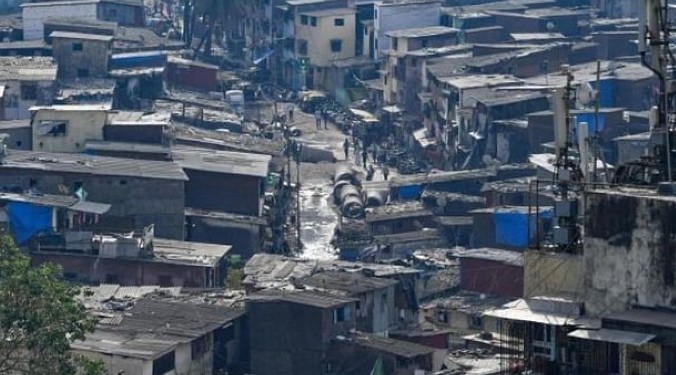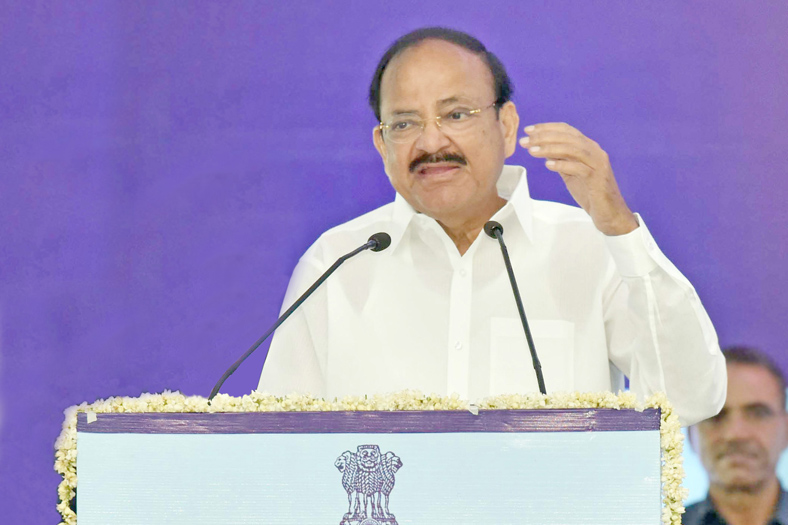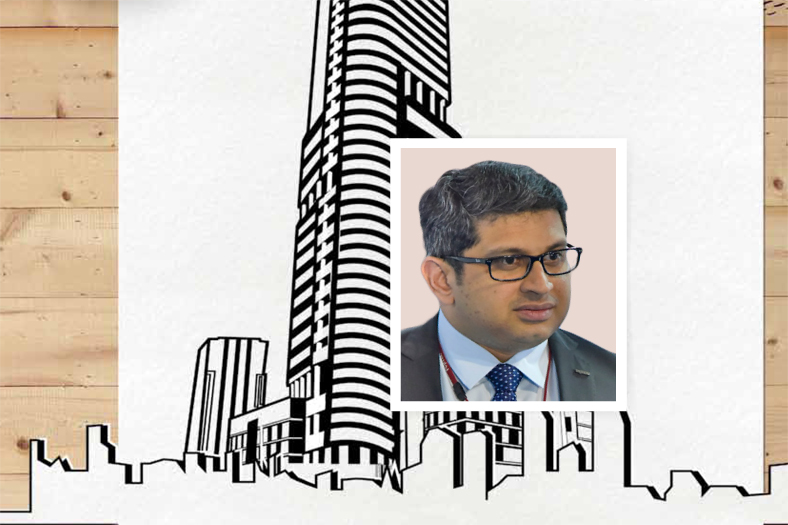Negative outlook for Indian infrastructure sector
Negative outlook for Indian infrastructure sector
Indian infrastructure is going to face the same fundamental challenges in 2013, reports India Ratings
India Ratings has maintained an overall negative outlook for Indian infrastructure projects for 2013, considering project companies’ continued weak credit profiles. However, certain pockets in the transportation sector have a stable outlook, but the credit profiles of several power projects, particularly coal based, remain under pressure.
A slew of policy initiatives announced by the federal government in 2012, particularly in the last quarter, have kindled a sense of optimism among market participants. The policy initiatives include a presidential directive to the state-owned Coal India to sign fuel supply agreements, restructuring of distribution utilities, constitution of the Cabinet Committee on Investments and the likely introduction of the Land Acquisition Bill in the ensuing Budget session of Parliament.
However, the rating agency believes that expectations of an immediate revival in the fortunes of the sector are somewhat misplaced. This is because the process of addressing fundamental challenges through concrete and sustained on-the-ground actions to repair damaged credit quality is likely to be protracted.
Loan restructuring and defaultsThe agency expects that in 2013 a number of projects are likely default on their bank debt obligations or alternatively the lenders might be compelled to approve forced debt restructuring packages.Impact of macro-economic headwindsSome of the macro-economic variables—picking up in GDP growth, abatement of inflationary pressures and the expected drop in interest rates—may turn favourable during 2013. This may result in cash flows of infrastructure projects experiencing some improvement though the ‘lag’ effect would imply that benefits are unlikely to accrue immediately.
Construction delaysThe study suggests that construction delays to continue in 2013. At least 50 per cent of the highway projects in the rated portfolio, scheduled for completion in 2013 have already reported 3-6 months delays due to land/right of way not being handed over by the concession grantor.
Road stretches that entail environmental and forest clearances and interface with the railways are more susceptible to prolonged delays.
What could change the outlook?Immediate concrete action on policies already announced could be one of the triggers for an outlook revision to stable. Simultaneously, sustained efforts at clearing bottlenecks that would facilitate smoother project completion (e.g. land acquisition and permits) and continued operations (such as ensuring fuel supply for completed power projects) could also alleviate some of the risks at the project level and contribute to stabilisation of the outlooks.
Renewed investor appetite for the sector could help sponsors raise capital to support projects that are perceived to retain a long-term economic value while facing stress in the short term.
Biomass projects outlook: negativeIt is expected that fuel prices and plant operating performance to be key drivers for the credit quality of biomass projects in 2013. Volatility in fuel prices and geographical limitations on sourcing alternatives has made power projects’ cash flows vulnerable to the whims of local suppliers of biomass waste. Given that most PPAs stipulate a fixed tariff, margins have been severely eroded due to unexpected, galloping fuel costs. Where regulators have been amenable to revising tariffs, the time lag in effecting the increase has led to cash flow mismatches, leading to defaults forcing bank debt to be rescheduled.
Considering its fairly recent vintage in India, plant stabilisation issues are impinging on biomass project completion more than previously considered. Performance issues mainly with boilers mean that plants are unable to operate at rated capacity and hence fixed costs remain underrecovered.
Wind energy projects outlook: stable to negativeThe outlook for existing operating wind energy projects is stable based on the strong, long-term revenue contracts that typically underpin cash flows. It wasn’t expected that concerns on reliability of performance warranties, accessibility to O&M services and availability of spare parts will have a rating negative effect as long as the projects use an established technology with availability of replacement O&M operators/spare parts and can withstand O&M cost stresses. However, where the PPA off-taker is a financially weak counterparty, delays for payments in power purchased will continue to exert pressure on project credit quality.
Toll roads outlook: stable to negativeConstruction delays and traffic underperformance will remain the two most important rating drivers in 2013. Many projects exhibit stable credit characteristics with drastic rating downgrades averted only on account of expectation of continued sponsor support to fund cost overruns (even if they are severe) and/or bridge marginal revenue shortfalls in case of operating assets.
Airports outlook: stable to negativeThe regulatory clarity that has emerged from the recent orders on project costs and the levy of airport development fee has provided relief to airport credits. This is because there is now greater certainty on the sources of funding, thereby alleviating the need for significant additional debt. Construction progress in expansion-cum-modernisation programmes has also been satisfactory and appears to be on course to achieve completion as per the revised schedule. However, concerns over delays in monetising real estate revenue streams and also slowing passenger growth in recent months continue to exert pressure on project companies’ credit profile.
Tepid economic conditions globally and slowing economic growth in India coupled with rising domestic airfares have lowered growth rates in international passenger traffic and led to negative growth in domestic passenger enplanements. It is expected that this fall in passenger enplanements as a cyclical trend and given the strong base. Thanks to the robust growth recorded over the last 6-7 years, it is unlikely that long-term forecasts would not be achieved.
Minor seaports outlook: stable to negativeExisting operating minor seaports are better placed to absorb the threat of a volatile global economic environment than major sea ports, particularly those with a higher proportion of long-term take or pay contracts in their revenue profile and a diversified cargo mix. The agency expects such assets to maintain stable credit characteristics more so if they have also completed capex programmes or alternatively have the flexibility to defer them.
Conversely, greenfield ports still in the ramp-up phase could be more severely impacted due to reduced commodity throughput. Negative rating action may be warranted for the ports that face concentration risk (e.g., dependence on imported coal for power plants under construction that could be facing delays) and lack of long-term off-take contracts and have weak financial structures.
What to look for in 2013In monitoring its portfolio of rated projects as also assessing the overall credit quality of the sector in 2013, we need to pay particular attention to the following factors:
Ability to address completion riskFor road projects, this would entail securing the requisite land/right of way in a timely manner along with environmental and forest clearances where applicable. Even if these are not fully forthcoming, the willingness of the concession grantor to permit projects to declare provisional COD and commence tolling would be the key. Equally important for projects that are deemed partially completed would be for lenders to effect pro-rata reduction in the principal amortisation to reflect lower debt draw down; else, projects could be faced with situations where cash flows from toll operations do not fully cover debt service payments given that initial base case structures had very thin coverage ratios.Coal-based thermal power projects will need to overcome difficulties in securing residual land for completing construction of plants, building supporting railway infrastructure as well as operationalising captive coal mines, where allotted. The latter would also need to secure relevant environmental permits.
While the Cabinet Committee on Investments and the proposed introduction of the LandAcquisition Bill should, in many situations, help in addressing the aforesaid bottlenecks, the agency does not believe that the short-to-medium term results or impact would be dramatic.
Interest rate reductionIf the widely anticipated interest rate cuts are affected by the RBI in 2013, the speed and extent to which the benefits are transmitted by lenders will determine cash flow benefits that individual projects could likely gain. The rating agency believes that even a 100bps cut during the year will not be adequate to fully retrace the large quantum (200bps-450bps) of interest rate increases that projects have been suffered in the last 3-4 years.
Sponsor equityAs projects reel under the impact of multiple risks, the ability and willingness of sponsors to extend support will be critical in averting rating downgrades or reducing the magnitude. Investor aversion to the sector has made the task of raising fresh equity capital very difficult. Asymmetry in valuation expectations has meant that sponsors’ attempts at disposing off poorly performing assets have not succeeded. Sponsors, many of whom are construction companies, have seen their financial profiles deteriorate, thereby reducing their appetite for supporting weak BOT projects.
Operating performanceIn 2012, 50 per cent of the rated projects needed injection of sponsor support to bridge deficiency in cash flows available for debt service. On an aggregate basis, about 30 per cent of debt service payments were made out of sponsor loans with only 70 per cent coming from project revenue.
In 2013, operating toll road projects could benefit from higher volume growth rates on the back of a pick-up in economic activity. However, this may not offer significant relief to those projects that have had material under-performance in the initial years or an extended traffic ramp-up phase.
Operating performance of power projects will be driven by their success in: (a) achieving plant stabilization quickly post-commissioning and (b) resolving fuel supply constraints. Assuming plants are able to operate at full capacity, utilities’ behaviour in fulfilling their purchase obligations under the PPAs will drive credit quality.
Funding issuesExisting projects, except those suffering extra-ordinary cost overruns, should be relatively insulated from funding constraints plaguing the sector. However, new projects seeking financial closure are likely to face considerable pressure as the trend witnessed last year is expected to continue in 2013 as well. Bank funding for greenfield projects for building thermal power generation capacities has virtually dried up. Only a select few toll road projects have succeeded in achieving financial closure and the underwriting process has taken much longer than was the case until 2011. Media reports suggest that nearly three-fourths of road projects awarded by the National Highways Authority of India (NHAI) in YTD FY13 have yet to achieve financial closure.
Funding challenges and woes afflicting several developers are combining to slow down new project activity. As an illustration, the charts below show a flattening out in terms of NHAI’s success rate in awarding projects, measured in kilometre length, and awarded projects being completed. The latter metric is also a manifestation of the completion delays described earlier.
The rating agency believes that 2013 could witness bond market issuances from strong operating projects. Falling interest rates, IIFCL’s partial guarantee product aimed at credit enhancement and the launch of infrastructure debt funds can all act as catalysts. Should this materialise to potential, sizeable bank finance could be freed up for being channelised into financing new project construction. Sponsors would also be exploring options to refinance operating projects in their portfolio with the intention of advancing equity returns; projects with longer ‘tails’ would be attractive candidates for regearing transactions.
2012 reviewThe rating actions for monitored infrastructure projects in 2012 were dominated by affirmations (73 per cent), although downgrades (25 per cent) continued to outpace upgrades (2 per cent), consistent with 2011. Most of the downgrades were on coal-based thermal power projects.
Construction delays, equity sourcing constraints, revenue underperformance in operating projects were the primary reasons for the downgrades and outlook revisions. A greater proportion of negative rating actions were avoided thanks to sponsor support that had helped some operating projects make timely debt service payments, although the support was noncontractual.___________
8
Cookie Consent
We use cookies to personalize your experience. By continuing to visit this website you agree to our Terms & Conditions, Privacy Policy and Cookie Policy.









